How do you craft an efficient and sustainable process that aligns people and keeps delivery steady? You need to get your hands dirty; there's no other way around it. So today, we are excited to walk you through the multiple ways Kanban is applied in practice.
Kanban can be extremely helpful. There's just one important thing to keep in mind when applying it: you have to tailor it to your own environment. We will share where some of our customers start with Kanban and how they manage to get the best of the method.
The following are lessons learned from clients in the pharmaceutical, engineering, financial, logistics, and other domains.
Where to Start with Kanban?
- Start with where you are now by visualizing your delivery process.
- Gradually uncover and analyze the most pressing issues you're struggling with.
- Do not set expectations for immediate and groundbreaking changes.
- Apply changes one at a time, learn, and evolve.
Common Business Challenges and Kanban Solutions
Lack of Transparency
Lack of transparency across processes is a common challenge that leads to the inability to align people on the process steps. As a chain of reaction, this creates an unfavorable environment of overloading and multitasking.
One of the first steps that our customers tend to apply when implementing Kanban is to explicitly visualize every stage of their work process. Mapping the operations process steps brings clarity to the workflow and helps understand available capacity levels. As a result, you can unveil efficiency setbacks such as multitasking. Ultimately, this helps to achieve greater standardization of the work process. The accomplished transparency is reported to result in shorter delivery times, increased quality, and reduced levels of stress.
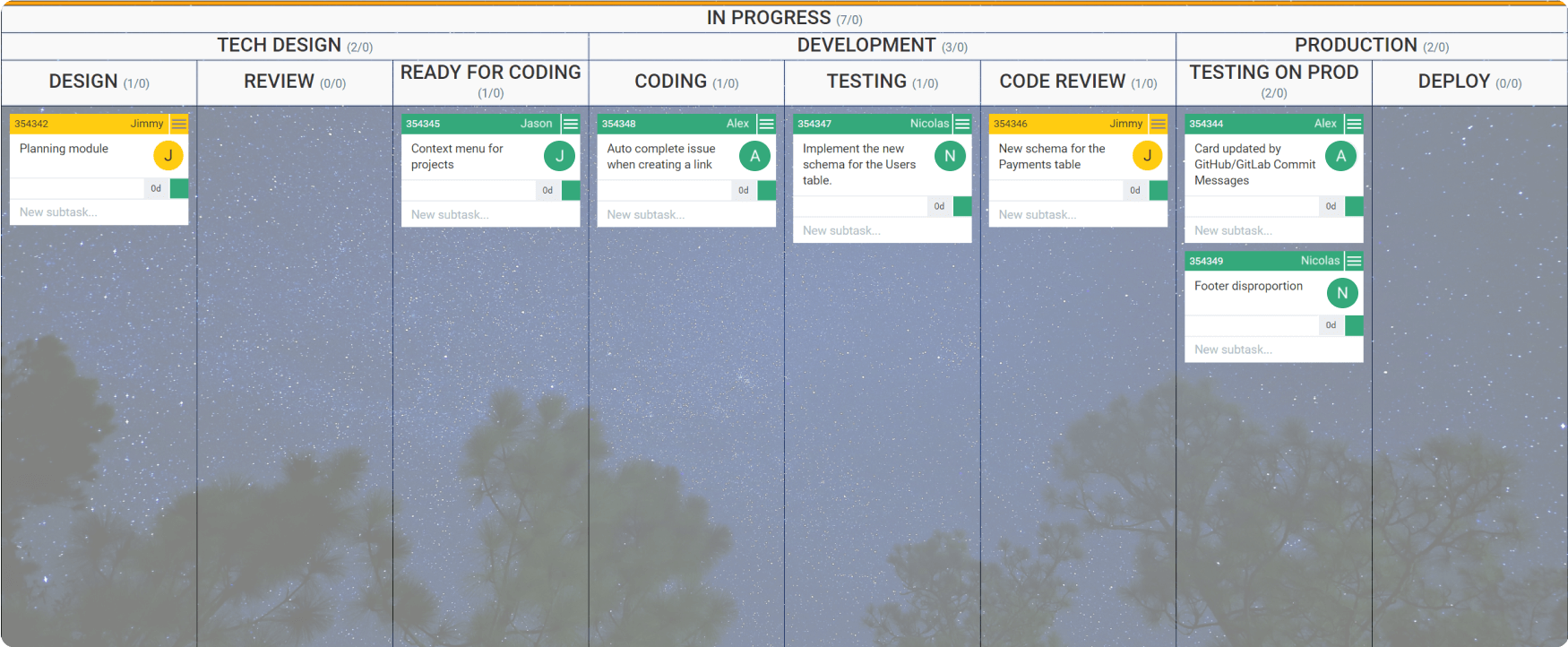 Work process mapped on a kanban board
Work process mapped on a kanban board
Lack of Flexibility and Agility
The inability to swiftly adapt to changing customer requirements is another challenge experienced by businesses across industries.
Achieving work transparency brings greater alignment between different company levels, which empowers businesses to react and adapt quickly to external changes. Introducing the practice of reducing the batch size of work items also helps our customers get more work done, deliver it faster, and gather timely feedback. Furthermore, instead of keeping people busy, taking the time to analyze and size the work optimally pays off by supporting a steady workflow.
Lack of Efficient Work Prioritization
Unclear work prioritization is a common challenge that often causes overburdening and contributes to unevenness in the workflow. In our experience, this can create risks of not meeting customer requirements.
The Kanban method is very generous when it comes to prioritizing tasks. One way our customers put this part of Kanban into practice is by using the classes of service concept. This set of policies helps teams and leaders better prioritize work and minimize the risk of delivery delays. A good workflow visualization helps define meaningful service classes and align the work at hand with them. As a result, businesses create clearer policies and adapt to different clients' expectations.
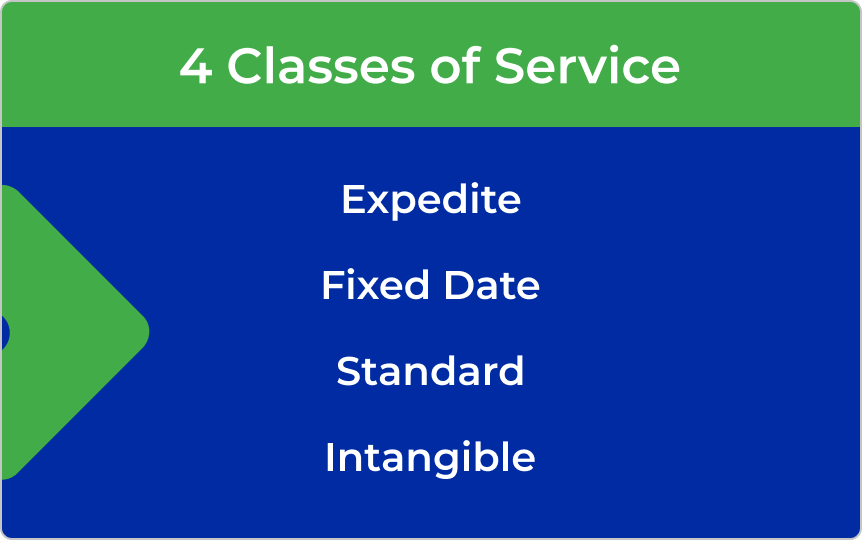 Kanban Classes of Service
Kanban Classes of Service
Lack of Process Predictability
Lack of process predictability is another major challenge leaders confront. It can lead to false delivery promises to customers and can compromise the continuous improvement efforts and goals. Often, our newest clients struggle with the predictability of their processes, which makes leaders susceptible to basing their decisions on gut feelings and wild estimations. The heart of the problem lies in not measuring the right workflow data.
To help with that Kanban offers multiple ways to analyze and take advantage of the accumulated data. The flow metrics are useful for monitoring and improving your value delivery process through analyzing how long it takes to complete work (cycle time), what your team can deliver in a certain period of time (throughput), or measuring how work items "age" in the process (work in progress).
Utilizing the analytics module in Businessmap (formerly Kanbanize), for instance, provides our customers with ways to improve based on real results. This scientific approach uses real performance analysis and creates an environment where solid data backs up workflow enhancements.
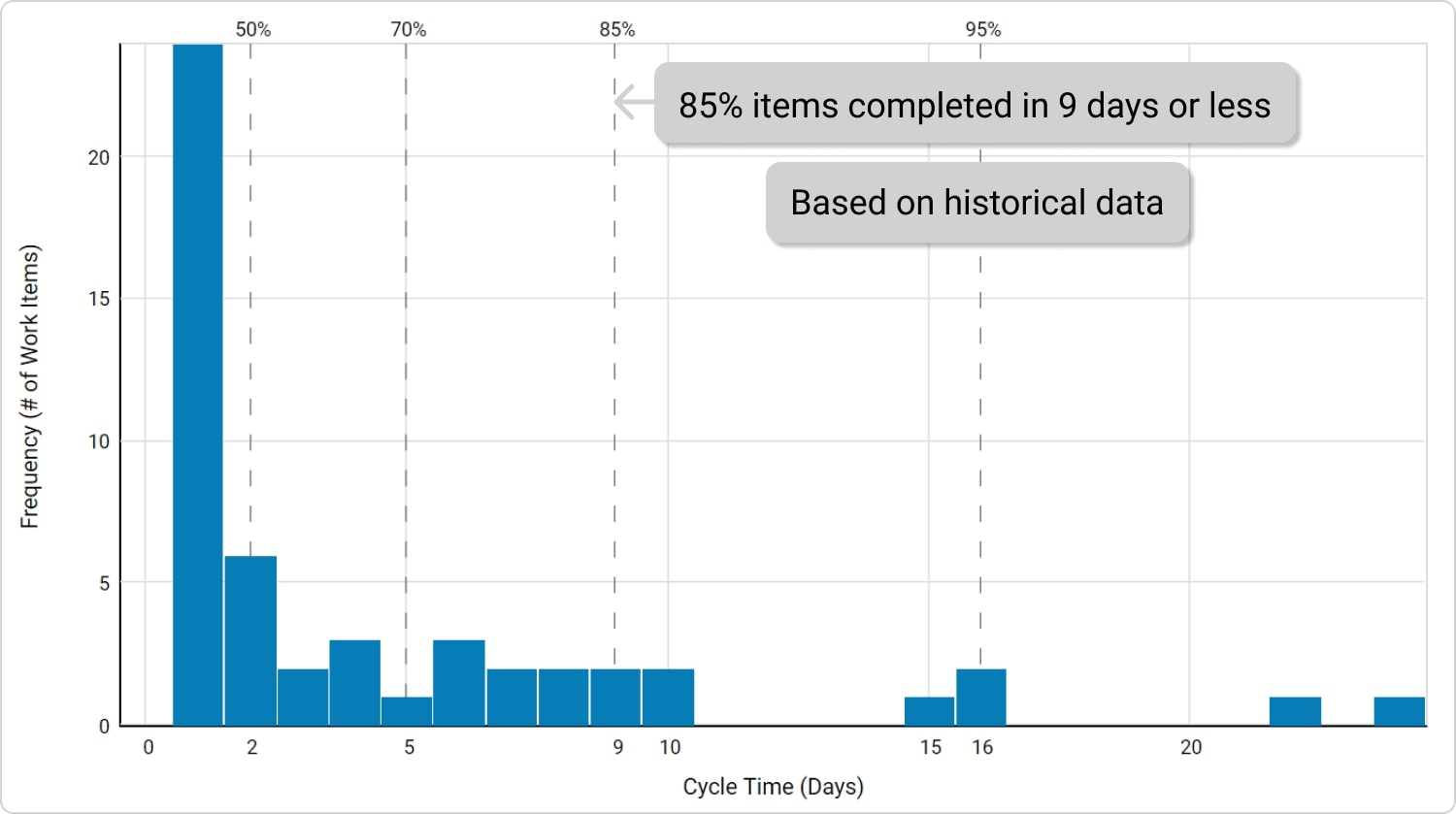 Cycle Time Histogram in Businessmap
Cycle Time Histogram in Businessmap
How to Evolve Your Kanban System?
- Monitor, analyze, and improve based on the data in your workflow.
- Use automation to streamline your workflow performance.
- Scale Kanban across the organizational levels.
Praised for its visual comprehensiveness, the Kanban method is famous for using visual signals of process impediments or blockers. These tokens are used to indicate a variety of flow obstructions specific to a given process. This functionality presented in Businessmap allows our customers to easily identify where work gets stuck in their process and provides them with the ability to analyze the reasons. As such, upper management and teams alike are empowered to dig deeper into the dynamics of the reasons blocking their workflow.
The Blocker Clustering chart, for instance, helps teams analyze repetitive delays and blockages in a given process step. The chart is useful for unraveling hidden insights about work impediments and driving continuous improvement efforts.
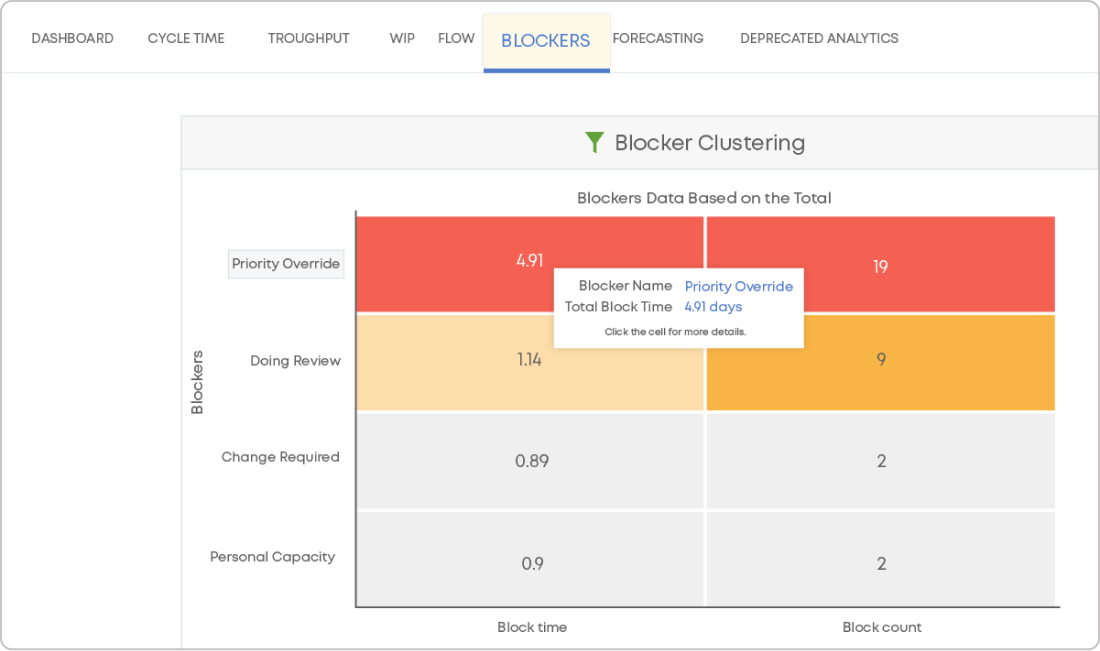 Blocker Clustering chart in Businessmap
Blocker Clustering chart in Businessmap
One of the main concepts of Lean for achieving higher efficiency is "Jidoka" or "automation with a human touch". As Lean focuses on creating steady workflows with as little waste as possible so there can be a continuous stream of value to the market, automation is an important part of Kanban workflow management.
One example is the flow of work items that are dependent on various teams in the company. To prevent different forms of waste, such as waiting and doing reworks, automating the process wherever possible is the solution for many companies. By automating the flow of work between multiple kanban boards, they can establish better synchronization between their teams and minimize wasted time in manual activities.
In reality, utilizing the workflow automation capabilities in Businessmap is what allows our customers to keep the process in a constant state of "flow'. By setting automatic triggers (business rules) to create new work items in a specific team kanban board or by sending notifications to summon the respective team's attention, Businessmap helps streamline work processes. As a result, our clients report that items in the backlog are being reduced and delivery times are improving.
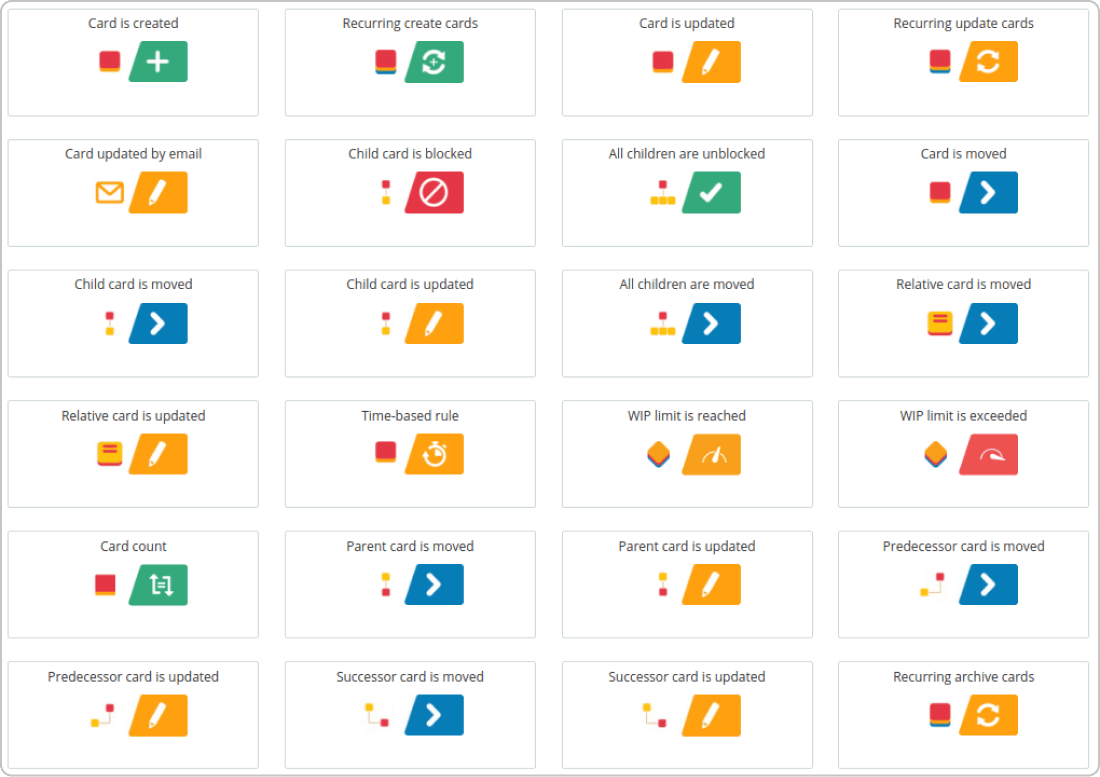 "If-this-than-that" business rules automation capabilities in Businessmap
"If-this-than-that" business rules automation capabilities in Businessmap
Scaling Kanban is an essential part of building a Kanban system. But how do you do that?
Businesses are empowered to visualize the entire end-to-end workflow thanks to Kanban's natural ability to scale by creating kanban boards on multiple hierarchical levels. There's just one question. How do you connect everything in a single environment?
For example, by using the parent-child linking capabilities of Businessmap, our internal teams and customers can see the big picture without missing any of the details. By visualizing strategic initiatives and their sub-projects, businesses connect and synchronize work with the strategic goals and coordinate work on the operational level.
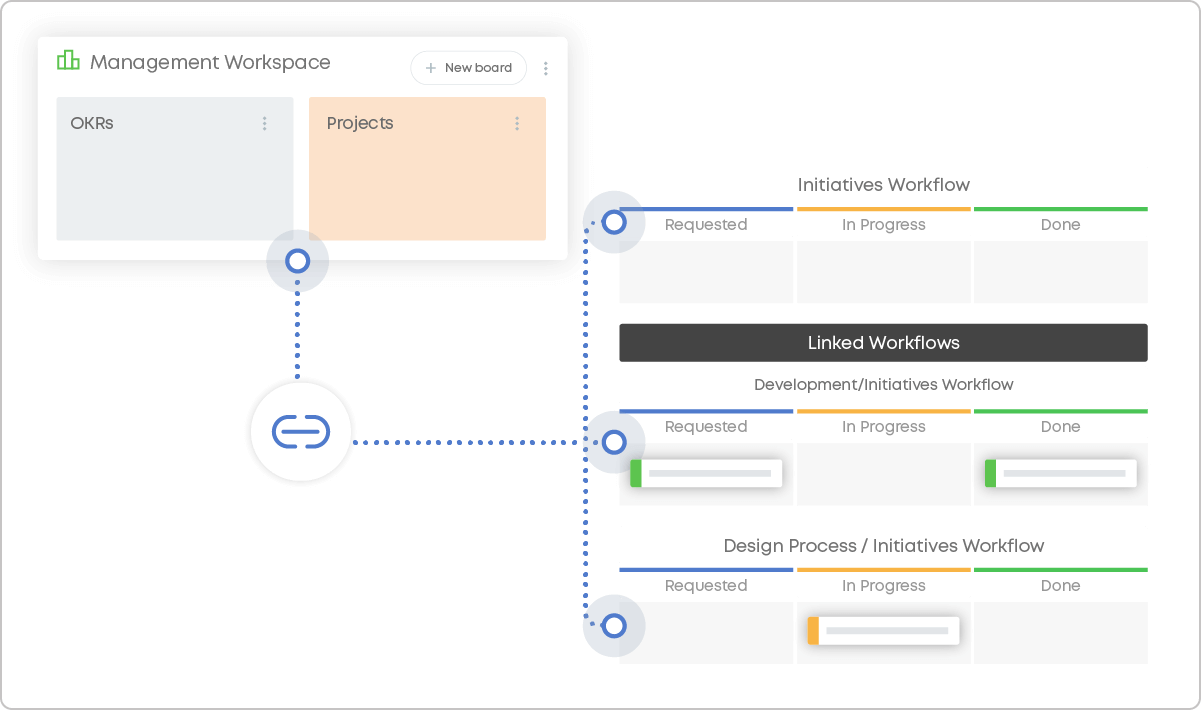 Depicting how strategic goals and execution are linked in Businessmap
Depicting how strategic goals and execution are linked in Businessmap
Tune to Experiment Mode and Set Out to Improve
Transparency over the company's direction and alignment of people's understanding of the work have proven to create a stable environment and build confidence in the process. It creates a culture of communication and collaboration where things are in constant motion. An intrinsic element of truly agile project management is embracing feedback, learning, and experimenting.
Kanban can help you achieve all that by instructing you on how to create conditions to evolve. The rest is up to you. Throughout our continuous quest for improvement, our team at Businessmap tweaks our boards regularly to enrich our experience, and we are 100% confident you can do it too!
Try Businessmap Free for 14 days
Iva Krasteva
Content Strategist | Agile Practitioner | Kanban Certified
Iva is a Kanban-certified Agile expert with hands-on experience in SEO, content creation, and Lean practices. She has published dozens of articles on Lean, Agile, and Kanban practical applications. Iva actively promotes collaborative, flexible work environments and regularly shares process optimization insights through writing.



